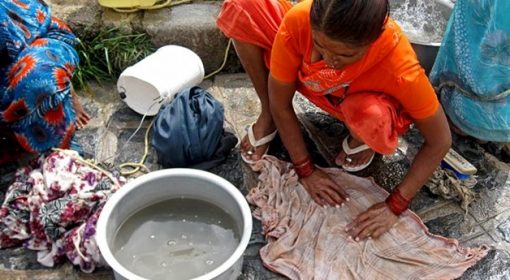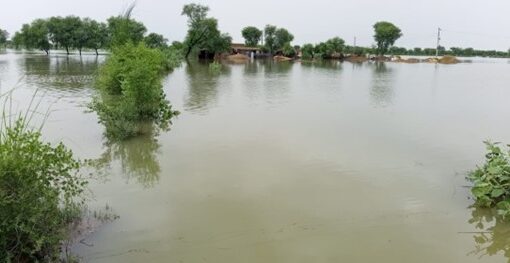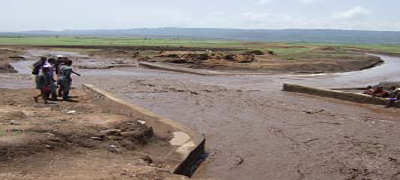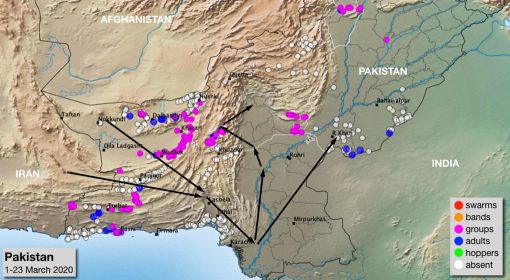By Allah Bakhsh, Flood-based Livelihoods Network-Pakistan
July 09, 2020
There is a saying derived from hundred years experiences that “necessity is the mother of invention.” Due to increase in population and change in means of income, rural life is undergoing significant change. Every decade is adding something new and subtracting old norms of life.
Flood-based Farming is also an ancient form of cultivation that has affected human lives greatly. A lot of changes have occurred in the past 4 decades. For example, the use of bullocks in farming has been replaced by tractors. As a result, the male calves are now usually slaughtered in the early ages, as opposed to the past practice when they were cherished and kept by the rural farmers because of their larger roles in flood- based farming. Similarly, traditional wooden tools are now replaced by mechanized farming equipment. Another vital change in spate irrigated areas is decreasing land holding size as land passed down to and divided among children. With land holdings getting smaller and smaller, interest in farming has been decreasing.
Above all, artisan like blacksmith, cobblers and potters families are forced to change their profession because the products and service that they have been providing over the centuries are getting outdated. Although artisan families engaged in such professions are still around, their skills are no longer able to cater to present-day needs. For example, people used to buy clay utensils for storing water; now they are going for concrete tanks, plastic containers, and refrigerators. Another example is handmade leather shoes, which have had to give way to factory-manufactured shoes now available in the market. So the new generation of artisans has to move to new livelihood skills– such as motorbike/car repair and maintenance, being barbers, electricians, and tailors—to make ends meet.
At the same time, there are examples of artisans who are able to invent out of necessity. Very recently, I have come across a village blacksmith shop owned by an old guy who is still engaged in making different spate irrigation tools, but his new invention was producing of two types of flour mills for domestic use.
Who buys these flour mills, what is the cost of production, how much does he charge for each, and how it works– I put a lot of questions to him, one by one. The blacksmith continued to explain that people living in the mountains (referring to Kohe Suleiman Range) are the major buyer for these tools now because the population in the mountain is thin and scattered. They are engaged in rearing livestock and selling firewood in nearby towns. For their water needs, they depend on small-scale spate irrigation floods, natural springs, and seasonal flows that are generated in the watershed area known as “the mountain.”
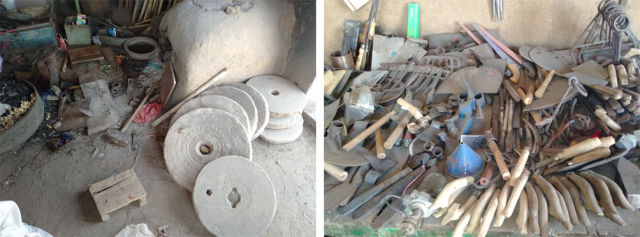
The blacksmith further said that he charges Rs: 9000 (±$50) for making the tin body and frame of the flour mill, while two rounded and properly dressed stones are provided by the owners for making the electric or solar mounted machine. The machines are similar, the only difference being whether they run on electricity of 250KW solar panels. One of these machines can easily grind 15-18kgs of grains on daily basis.
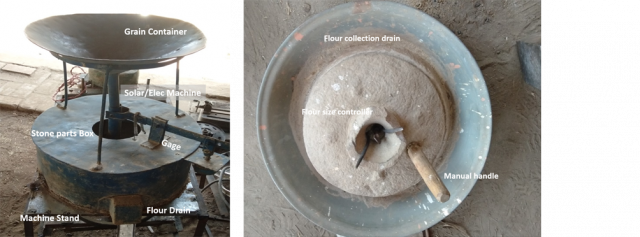
Another mill, a manual one, is operated by women to meet their daily flour need. This mill is detachable and can be carried on donkeys and camels. This can be especially beneficial to nomads who normally do not live in the same place for a long time. This machine is assembled by the blacksmith against for Rs 2000 (±$12) each, with the owner providing the grinding stones.
Most of Balochistan Province has semi-nomadic or scattered populations. The rural settlements are not connected to the electricity grid. Such machine will be especially valuable for the people living in such conditions and areas. Local blacksmiths are available in villages of all sizes. If the design of these flour mills is shared with the blacksmiths in other spate-irrigated areas, they can produce it easily.

